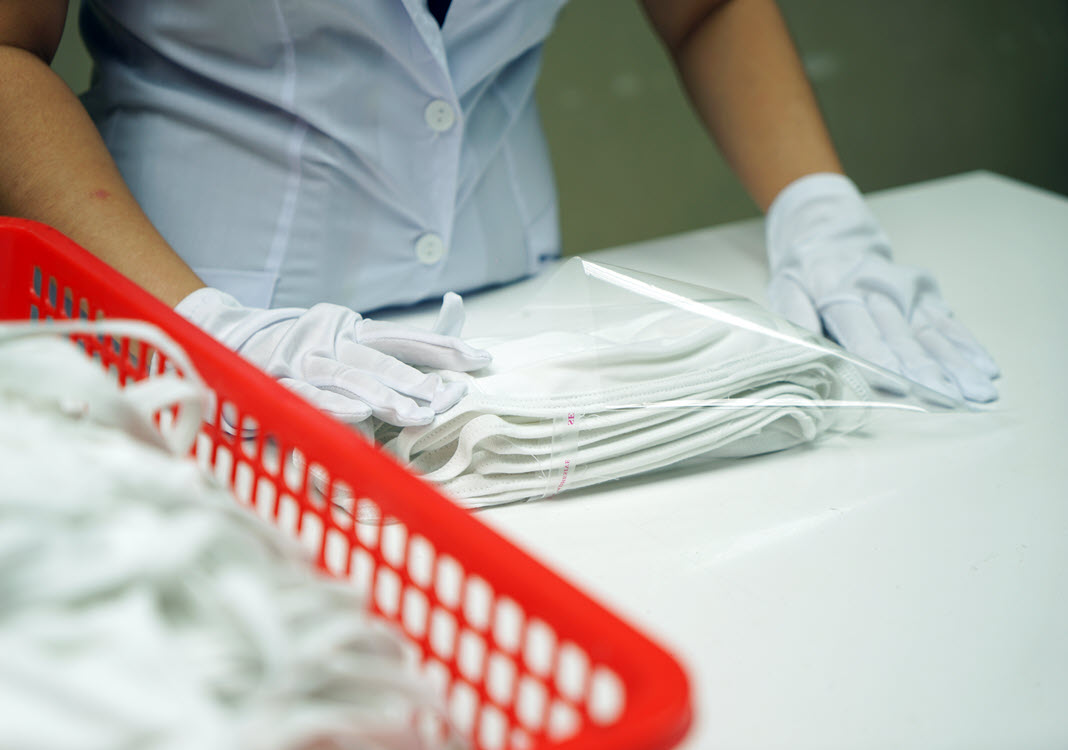The Ministry of Science and Technology is garnering feedback on a draft decree to revise Decree 43/2017/ND-CP on goods labeling, with a regulation that requires labeling export goods in Vietnamese. However, some opine that this requirement is unnecessary and costly for businesses.
Nguyen Van Kich, chairman and general director of the seafood company Cafatex in Hau Giang Province, said the information on the packaging of his company’s export products to the Middle East is generally in English or Arabian as required by partners, and is in Japanese for export to Japan. In the United States, the products must have English labels and sub-labels in Vietnamese for sale in supermarkets which have overseas Vietnamese customers. “The import market requires labeling under its regulation, not in the language of the export country,” Kich said.
However, under the draft decree, the label must be written in Vietnamese, except when there are foreign words with Latin alphabet, including the international name or the scientific name of medicines for humans with no equivalents in Vietnamese; the international name or the scientific name of the components and quantitative components of goods untranslatable into Vietnamese or translatable into Vietnamese but meaningless; and the name and the address of foreign businesses related to goods production.
Besides the Vietnamese language, the contents on the label can be written in other languages. The contents in other languages must be the same as the contents in Vietnamese. The size of words in other languages must not be bigger than the size of the Vietnamese words.
At a recent workshop to garner opinions on the draft decree and its guidelines, Tran Quoc Tuan, head of the Department for Goods Quality Management under the Directorate for Standards, Metrology and Quality (Ministry of Science and Technology), said goods labeling regulations have helped businesses with transparency for their goods before the market launch. However, coordination between local management agencies in goods label management is not close, which has allowed some businesses to take advantage of the sub-labeling regulation to commit fraud in goods labeling.
Hoang Thi Thuy from the Supervision and Management Department under the General Department of Vietnam Customs cited an example that a Chinese-invested company in Binh Duong Province has imported bicycle and electric bicycle parts from China for assembly for export to the United States to enjoy tax preferences, tarnishing the image of Vietnamese goods.
Therefore, the revision of Decree 43 on goods labeling is expected to prevent origin fraud and faking and incorrect labeling.
Importers matter
Commenting on the draft decree, Truong Dinh Hoe, general secretary of the Vietnam Association of Seafood Exporters and Producers (VASEP), said one of the concerns is the inclusion of export goods into the scope of revision. He argued that it’s unreasonable, unbeneficial for consumers and even costly for businesses when export goods are not consumed in Vietnam but are required to be labeled under the regulations of both Vietnam and the importing country.
Hoe cited the footwear industry as an example. With the production capacity of some one billion pairs of footwear per year, the label change, with just VND100 per pair, will cost the industry more than VND100 billion per year.
Further, the labels on export goods, such as seafood, generally state the name of owners, who are distributors like Costco and Walmart. Therefore, would the importers accept the name of the producer on the label?
Hoe argued that under the international practice, exporters in Vietnam are only responsible for supplying goods as per the commitment in the contract, while importers are responsible for goods labeling not in violation of the regulations in their countries.

Kich of Cafatex said it’s not necessary to introduce the above-mentioned goods labeling rule. “Foreign customers do not know the Vietnamese language. Compliance with this proposed labeling rule is very costly and time consuming, and even requires businesses to travel overseas for re-negotiation with their partners,” he said.
Economic expert Tran Huu Hiep cited as an example Decree 36/2014/ND-CP on tra fish farming, processing and exporting with a regulation that the ice glazing ratio must not exceed 10% of the total weight and the maximum water content must not exceed 83% of the net weight (the weight of tra fish fillets exclusive of the ice glazing). Hiep said the decree with the aim of improving the quality of export tra fish is a good move, but not all customers accept it. “That’s what we want, but what matters is it must refer to customer demand,” Hiep said, adding that at that time, quite a few customers still preferred tra fish products with higher ice glazing ratio and maximum water content.
This is the reason for the issuance of a new decree (Decree 55/2017/ND-CP replacing Decree 36/2014) which has a more liberal regulation for the ice glazing ratio and the maximum water content. With this reality, Hiep thought that all policies regarding export goods regulations should refer to the market demand.
By Trung Chanh









